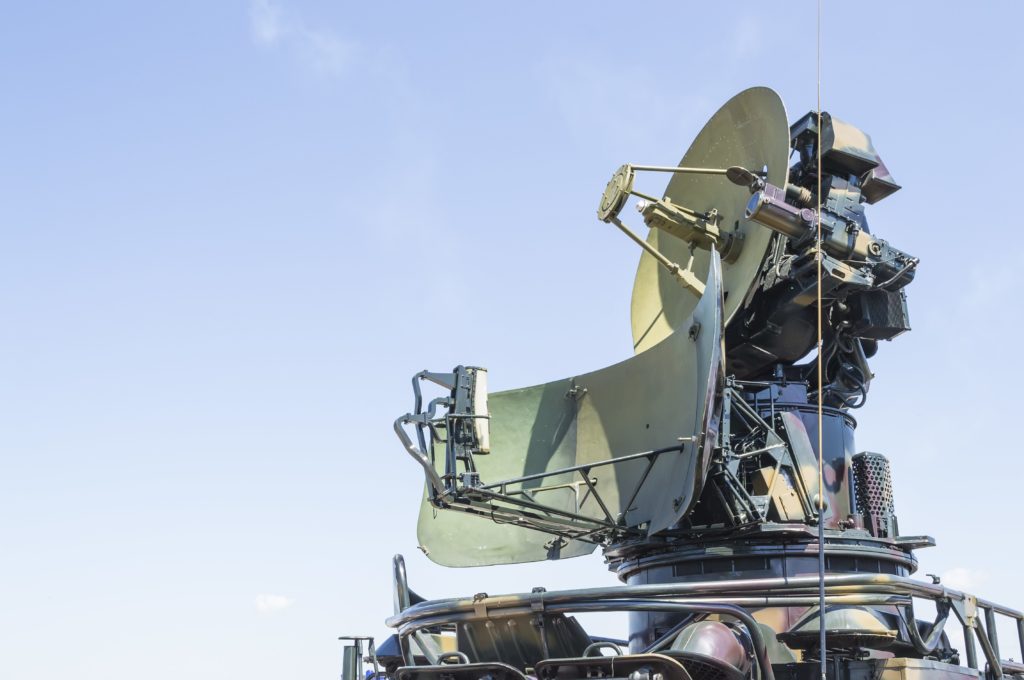By Wes O’Donnell
Managing Editor, In Military and In Cyber Defense
Military radar has remained largely unchanged since its development over 100 years ago.
Working as an active-duty airman in the U.S. Air Force, my primary responsibility was the repair and maintenance of the complex radar system onboard the E-3 Sentry AWACS aircraft. The radar lessons I learned in tech school, however, were exceedingly simple: a transmitter emits a radio wave that is reflected back when it comes in contact with an object.
If that object is moving toward or away from the transmitter, the return signal has a slightly different frequency, caused by the Doppler effect. By calculating the time of flight of a radio wave moving at the speed of light and the Doppler effect, you can determine the distance and speed of most conventional aircraft.
Get started on your cybersecurity degree at American Military University. |
Named after the Austrian physicist Christian Doppler, the Doppler effect is the change in frequency or wavelength of a wave in relation to an observer. It’s the reason why a passing ambulance has that familiar change in pitch as it passes by. Compressed sound waves as it moves toward you are higher pitched. Whereas stretched out soundwaves as it moves away result in a lower pitch.
America’s entire stealth program is built upon the principle of absorbing radio waves with special materials so they don’t reflect signals back to an adversary’s radar system. In that way, America’s stealth warplanes like the F-22 Raptor, F-35 Lightning and B-2 Spirit can remain relatively invisible on most current radar systems.
The Advent of High Definition Radar
Two weeks ago, MIT Technology Review reported that researchers at Austria’s Institute of Science and Technology used entangled microwaves to create the world’s first quantum radar system.
Quantum mechanics allows for some very interesting phenomena on the magnitude of the very small. One of these phenomena is known as the “principle of entanglement,” where two particles can be linked together regardless of distance.
This forms what scientists call a quantum entangled pair. According to the MIT announcement, quantum radars involve pairing photon particles, shooting one downrange while keeping the second captive for observation. The downrange particle will act in a certain manner as it bounces off certain objects, behavior that can be observed in the captive particle. The result is much more detailed information about the target than could be seen in previous radars.
This results in an ultra-high-definition radar picture. So instead of seeing an indistinguishable blob on a radar scope, quantum radar would have the ability to make out fine details of an aircraft, for instance, the distinct shape of an F-35 Lightning.
Quantum Radar: Seeing the Unseen
However, because modern stealth aircraft are optimized for stealth against radio waves, quantum radar, which uses photons, would make stealth aircraft much more susceptible to detection.
In addition, traditional radars are “loud” in that they typically give away their position on the ground — or in the air in the case of the AWACS — by blasting out a high-energy radio signal. Like having a full-size lighthouse in your living room, it’s hard to miss.
But quantum radar is nearly undetectable as it emits very little energy.
One of the countermeasures that the U.S. military employs against enemy radar systems is electronic warfare, — actively jamming an enemy’s radar signal. Quantum radar’s lack of detectability offers a distinct tactical advantage in warfare.
America might need to re-think its current approach to offensive stealth operations.
From Stealth to Health
As for quantum radar, there are non-military applications as well. According to the study Experimental Microwave Quantum Illumination, quantum radar could have potential as a non-invasive scanning method for biomedical applications, e.g., imaging of human tissues or non-destructive rotational spectroscopy of proteins.
For someone who went from radar systems in the Air Force to working in medical imaging for Siemens, I find quantum radar an exciting technology to watch.
As a field of physics, quantum mechanics promises some massive technological advances if we can wrap our minds around the reality-bending nature of its principles.
As Nobel physicist Neils Bohr once said, “If quantum mechanics hasn’t profoundly shocked you, you haven’t understood it yet.”
This article appeared originally on InMilitary.com


Comments are closed.